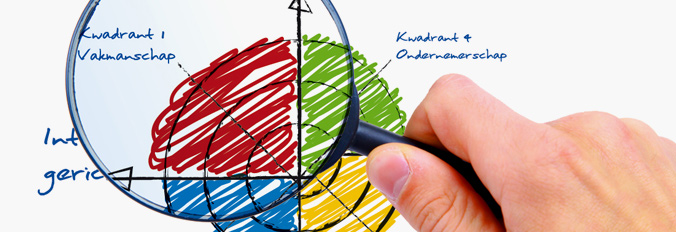Four Phase model for increasing organisational capacity - T.W. Hardjono
The Four Phase model is based on experience and has been verified on the base of the historic development of three companies: Philips, KLM en Gelderse Papiergroep. The normative nature of the Four Phase model means that it can also be seen as an accountability model. Organisational consultants and managers can use the Four Phase model to account to themselves, one another and third parties for the measures which they propose or have carried out, both beforehand and afterwards.
The following propositions apply in the structure of the Four Phase model:
- The goal of the organisation is to multiply capacity;
- An organisation is a symbolic and functional collaboration;
- An organisation must seek to find a balance between external focus and internal focus;
- An organisation must seek to find a balance between a focus on control and a focus on change;
- The focus on control combined with the external focus gives the effectiveness of the organisation. The focus on control combined with the internal focus gives the efficiency of the organisation;
- The focus on change combined with the internal focus gives the flexibility of the organisation. The focus on change combined with the external focus gives the creativity of the organisation.
Illustration

Link with Quinn
By placing this model within the Quinn model, we implement a change. We replace the term 'flexibility' in the Quinn model with 'innovative'. The Four Phase model then fits as follows:

More information
- Click here to pose your question
- Previous page





